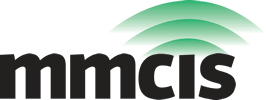Site Update Tutorial
The following instructions detail the preferred method of submitting web site updates to MMCIS.
Send by email to [email protected]. This ensures that your request will get processed in the shortest time. If you send it to an individual's mailbox, they may be on vacation or working on another project and not see it. Email addressed to [email protected] is received by all the webmasters so there is no need to copy anyone on it.
The example below uses a page from our web site: http://www.mmcis.com/About/HomePage.html.
For small changes to a page
To avoid any confusion as to which page is being changed, cut and paste the page address from the browser into the email message.
Here is where to find the address if you are using Internet Explorer:

Here is where you find it using Google Chrome:

Let's say you wanted to change the text in the first paragraph, replacing the phrase "Web Sites That Work" with "Web Sites That Really Work". Your email would contain the following:
|
on page http://www.mmcis.com/About/HomePage.html Change "Web Sites That Work" to "Web Sites That Really Work" in first paragraph. |
Alternatively, you could cut and paste the entire paragraph, make the change in place and send us
|
on page http://www.mmcis.com/About/HomePage.html Replace the first paragraph with the following: MMCIS provides all the services needed to plan, develop, host, and maintain web sites. We specialize in "Web Sites That Really Work" providing e-commerce, customer support, credit reporting, product delivery, and customized business functions. Our approach is to work closely with clients, first in planning, developing, and integrating their web sites, and then providing ongoing services tailored Philosophy and Approach Services |
This way we avoid misspellings and punctuation errors, and the changes are made to the correct page. It is also a lot easier for us to keep track of the changes and to report back to you when they are done, or to indicate questions about a particular change.
For wholesale page changes
New page content or page replacement content can be sent as a word document attachment. Some things to be conscious of: - Don't use all caps as these are shouting on the net. We have to go through and convert to proper case and it is hard to know what should be in all caps from the source (things like acronyms or company names.). - Tabular data should be done in a word table. This is easier for you and easier for us.
Unless you are replacing the entire page, make sure that we know what parts are new or changed. To designate this, turn on Highlight Changes under the tools menu for Word. Then start with a document that has the text from the current web page in it. You can get this by saving the current web page from your browser and then opening it in Word, or by cutting and pasting the text from the browser into Word.
Some General Observations
Formats
For text changes, plain text is best for small changes, for all others Word docs are usually the best. Don't forget to use tables instead of spacing or tabs to format tabular data. Excel is fine for tabular data as well
For images, we can take just about any format:
| images to be used as is on site: | GIF, JPG, PNG, or almost any other image format. (e.g., Photoshop, EPS, TIFF, BMP, WMF, Illustrator format.) |
| images contain logos or other material to be resized or otherwise manipulated | For images from which we have to extract logos or other elements, best format is PNG or Photoshop with layers preserved or Illustrator. Gifs and jpgs are usually much harder to work with. |
PDFs, PowerPoint files, and Word documents are the last choice for images since it is almost impossible to extract the images with the original resolution.
File Names
Most of our sites are hosted on UNIX systems. This has implications for file names. On Windows systems, image.GIF is the same file as image.gif. On a UNIX system they are two different files. For this reason, we insist that files you send us have all lower case extensions, at least, and that you are careful about keeping the filenames consistent from update to update. For example, if you have a link on one of your pages to otherpage.html, and you send us a new version of otherpage.html but it gets sent with the file name Otherpage.html, there is a good chance that the old page information will still be served. This is because when we copy the new version of the page to your site, it does not replace the existing page but instead becomes a new file in the directory that no link points to (remember the link points to otherpage.html not Otherpage.html).
Default Pages
The default page is the page that gets served when an Address (location or URL) does not specify a page. For example, http://www.mmcis.com does not specify a page so the default page in the document root directory will be served. This is often referred to as the home page. Subdirectories also have default pages, e.g.: http://www.mmcis.com/About
The normal default page name on our servers is HomePage.html, with the capital H and P significant. Occasionally a directory will have index.html as the default page.
.HTML vs .HTM
Normally, pages are named with the extension: .html. We use .htm extensions to post draft versions of pages or for other pages that we don't want to be indexed.
Any questions on any of this, email [email protected]
